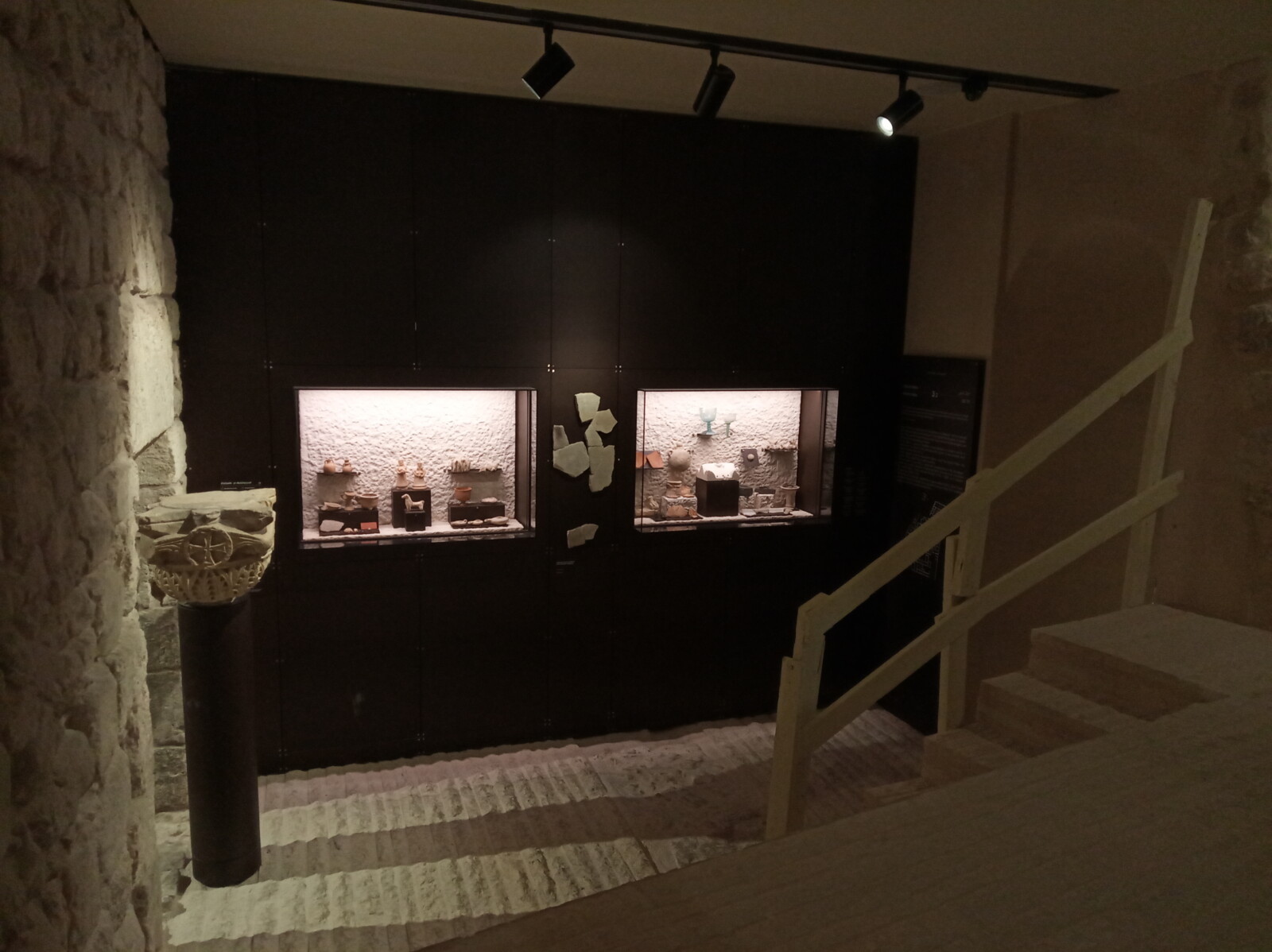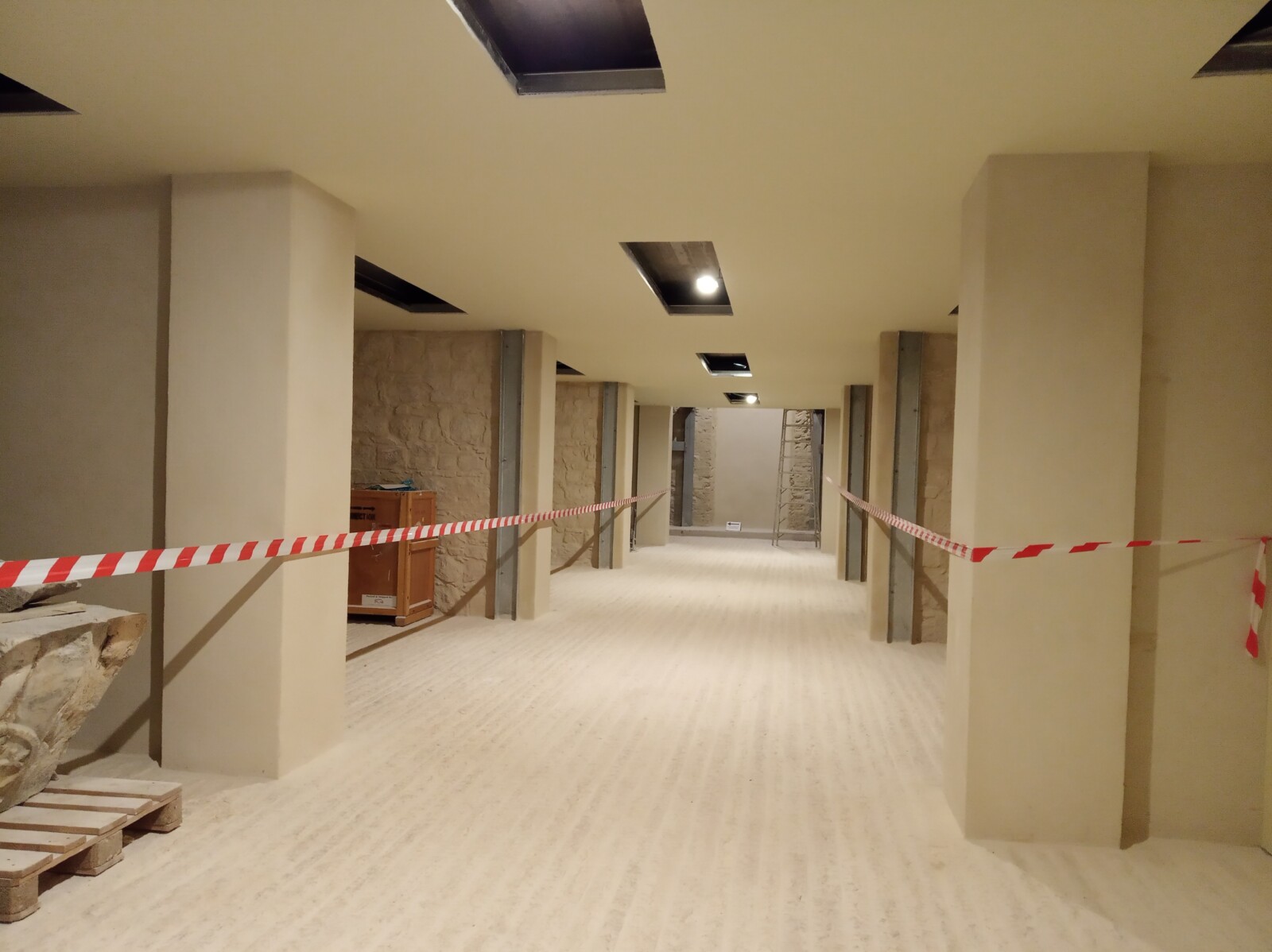The new Saller wing at the Museum of the Flagellation
The opening of a new wing in the Museum of the Flagellation is scheduled for the end of the year. We met the archaeologist Daniela Massara, the Curator of the museum, who described to us the new Saller wing and told us something more about the works.
What is the Saller Wing and why does it have this name?
Daniela Massara : The Saller wing is the wing that will house the main rooms of the museum, where we will present the discoveries of the archaeological excavations done by the Franciscan friars. These rooms form a route through the Holy Places. This part is dedicated to Father Silvester Saller, the first director of the museum on the site of the Flagellation and a Franciscan archaeologist who trained especially in this field.
Why was there the need for a second wing, and how does it differ from the first one?
The last wing that we are opening to the public is actually the oldest part of the museum: before the restoration, the spaces of the museum were concentrated in a large hall divided into small rooms. The places that the visitor can see now, consecrated to the New Testament, are rooms that have been restored but which were previously used for other purposes (restoration studio, a place to receive guests etc.). Their walls were also covered with plaster, which masked the historical structures. This wing, consecrated to the New Testament and daily life in the time of Jesus, is thus new.
At the same time, we are reopening in a new form the spaces that had been organized by Father Michele Piccirillo. It was he who had thought of a topographical route, in which the works could be displayed according to the moments and contexts of their discovery. In addition to the traditional rooms there are now new spaces, such as the room consecrated to the Holy Sepulchre, and a second floor where the collections will be concentrated.


How will this museum be unique compared to the other museums in Jerusalem?
Very certainly the room consecrated to daily life in the time of Jesus, because it houses a series of objects that are closely linked to the Gospels and which are the best illustration of the daily life that we can have by reading the Bible.
Another unique aspect is the journey through the Holy Places, a journey made not geographically but through the objects on display. There are some unique objects from archaeological excavations. For example, the discoveries from the village of Capernaum can only be seen in our museum.
In your work as exhibition curator, what were the difficulties you encountered on this site?
One of the difficulties is definitely the space, as the museum is located in a complex, the Flagellation, which is itself in the Old City: we are therefore in particularly cramped spaces. This has led us, for example, to move all the objects into a storage area, which means not having the works within easy reach all the time.
On the other hand, this distance in relation to the objects allows concentrating more on the conception of the space, before going to check the information on the object.


What has been important for you during this work ?
As curator, I work with a team. The ideas that we have pooled form the framework that has allowed me to work. Teamwork and communication between people with different but essential competences. And it is a dialogue that always allows us to make progress. For example, I realised to what extent we have to make a distinction between what is important from a scientific point of view and what has to be communicated. A pot may seem a very ordinary object, but it takes on a very special interest when you realize that it was found in the house believed to be Peter’s, so it was probably part of Christ’s life.
We have selected objects that Father Piccirillo had already chosen, taking care to communicate the information that had been neglected previously. We then had to think about the panels in the halls and the cartels in the museum, which we have decided will be in English only. Having to face four languages can be a real visual challenge !
What are the plans for opening the museum?
The perspective is to open the rooms to the public step by step. The time depends on the concrete nature of the works and on the related costs, for the furnishings, the panelling, the costs of the personnel. There are still hundreds of objects to clean, which requires at least two other missions with the restorers. The pandemic slowed down the works, which were blocked for almost two years.
We hope that the museum will be finished in three years. We would like to proceed with a single opening of the whole museum including the historical section.
(Translated by Joan Rundo)



